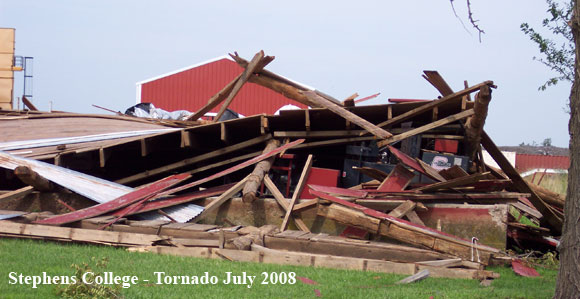



Michelle Kidwell
Callaway County Emergency Management Director
MichelleKidwell@cceoc.org
1201 State Road O
P O Box 817
Fulton, MO 65251
573-592-2480 (office)
573-592-0411 (fax)
Damage Assessment
THE DAMAGE ASSESSMENT PROCESS
One of the most important elements of a county's response to an emergency or disaster is damage assessment. This process is essential in determining what happened, what the effects are, which areas were hardest hit, what situations must be given priority and what types of assistance are needed (e.g., local, state, or federal). Emergency response can be more effective, equipment and personnel can be better used, and help can be provided quicker if a thorough damage assessment is performed.
Eligible Types of Assistance
In the aftermath of a disaster, both public and private non-profit and individual damage assessments must be performed, because of the corresponding types of federal/state assistance available. Each type of assessment is designed to quantify the eligible amounts of damages a community incurred.
1. Public Assistance
"Public damages" can include any damage incurred by a structure or facility which is owned by a public or private non-profit entity. This could include roads, bridges, buildings, utilities, etc. To be eligible, the damages must fall in one of the following seven basic categories:
- Category A - Debris Clearance
This category includes all storm induced debris on non-federal public roads, including the right-of-way, non-federal public waterways, other public property, and private property when undertaken by local government forces. It can also cover the cost of demolition of public structures if those structures were made unsafe by the disaster. - Category B - Emergency Protective Measures
This category addresses the need to provide appropriate emergency measures designed to protect life, safety, property, and health (i.e., barricades, sand bags and safety personnel). - Category C - Road System
This category addresses damages to non-federal roads, bridges, streets, culverts, and traffic control devices. - Category D - Water Control Facilities
Eligible damages under this category include costs to repair or replace dikes, dams, drainage channels, irrigation works, and levees. - Category E - Building and Equipment
Eligible damages under this category include costs to repair public buildings and equipment, supplies/inventories that were damaged and transportation systems such as public transit systems. - Category F - Public Utility Systems
Under this category, assistance is available for damaged water systems, landfills, sanitary sewerage systems, storm drainage systems, and light/power facilities. - Category G - Other
The "other" category includes park and recreational facilities, or any other public facility damages that do not reasonably fit in one of the other six categories.
2. Individual Assistance
The purpose of individual damage assessment is to determine the extent to which individuals and private businesses have been impacted by the disaster. The two basic categories of eligible individual damage include:
- Damage to Homes
A person whose residence has been damaged due to a disaster may qualify for various forms of disaster assistance. When damage assessors go into the field, they will estimate the degree of damage to the home, evaluate the victim's insurance coverage, estimate the victim's income, and determine the habitability and type of the victim's home.
- Damage to Businesses
Privately-owned businesses that were damaged or destroyed by the disaster can qualify for individual assistance programs. The same procedures used to assess damages to homes are used to quantify damages, as well as determine the impact those damages will have on the community. Loss of a business may result in lost jobs, income, etc., to the individual owner and employees.
Damage Assessment Teams
To conduct an accurate damage survey, local governments must have capable Damage Assessment Teams. These teams should be identified and trained in advance of the disaster so they will be ready when needed. The following are commonly used for Damage Assessment Teams, although all may not be needed for every disaster.
-- City and County Engineers
-- Utility Company Personnel
-- Police and Fire Officials
-- Property Appraisers
-- Building Inspectors
-- County Agricultural Extension Agents
-- County Health Officials
-- Red Cross Officials
-- Real Estate Appraisers
-- Insurance Agency Representatives
The composition of the Damage Assessment Teams will vary depending on the severity, type of damage, and the availability of personnel. Each team should have a team leader who makes sure the team has the proper forms, maps with identified areas marked, and transportation.
During joint damage assessment activities involving the state/FEMA, the county should have a team member to assist state and federal Damage Assessment Team members at all times.
